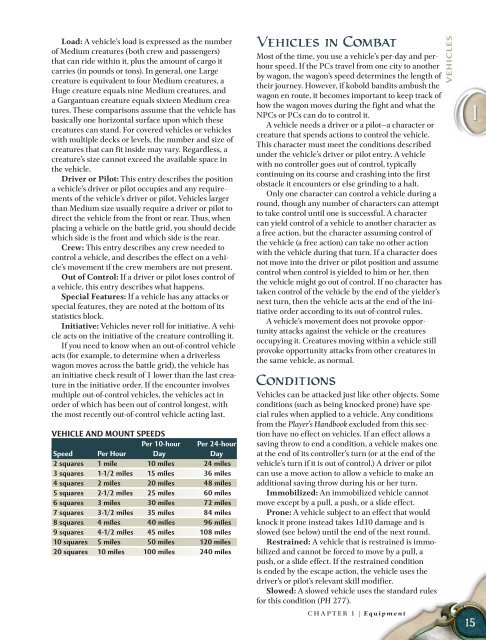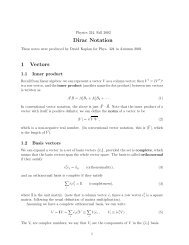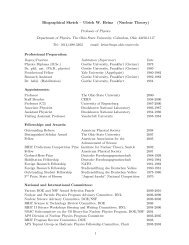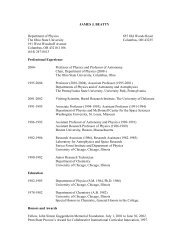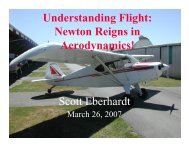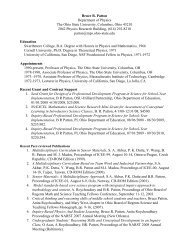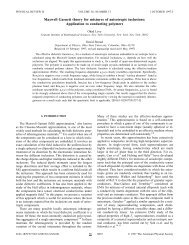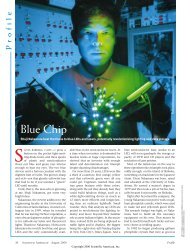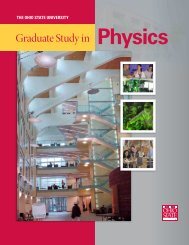You also want an ePaper? Increase the reach of your titles
YUMPU automatically turns print PDFs into web optimized ePapers that Google loves.
Load: A vehicle’s load is expressed as the number<br />
of Medium creatures (both crew and passengers)<br />
that can ride within it, plus the amount of cargo it<br />
carries (in pounds or tons). In general, one Large<br />
creature is equivalent to four Medium creatures, a<br />
Huge creature equals nine Medium creatures, and<br />
a Gargantuan creature equals sixteen Medium creatures.<br />
These comparisons assume that the vehicle has<br />
basically one horizontal surface upon which these<br />
creatures can stand. For covered vehicles or vehicles<br />
with multiple decks or levels, the number and size of<br />
creatures that can fit inside may vary. Regardless, a<br />
creature’s size cannot exceed the available space in<br />
the vehicle.<br />
Driver or Pilot: This entry describes the position<br />
a vehicle’s driver or pilot occupies and any requirements<br />
of the vehicle’s driver or pilot. Vehicles larger<br />
than Medium size usually require a driver or pilot to<br />
direct the vehicle from the front or rear. Thus, when<br />
placing a vehicle on the battle grid, you should decide<br />
which side is the front and which side is the rear.<br />
Crew: This entry describes any crew needed to<br />
control a vehicle, and describes the effect on a vehicle’s<br />
movement if the crew members are not present.<br />
Out of Control: If a driver or pilot loses control of<br />
a vehicle, this entry describes what happens.<br />
Special Features: If a vehicle has any attacks or<br />
special features, they are noted at the bottom of its<br />
statistics block.<br />
Initiative: Vehicles never roll for initiative. A vehicle<br />
acts on the initiative of the creature controlling it.<br />
If you need to know when an out-of-control vehicle<br />
acts (for example, to determine when a driverless<br />
wagon moves across the battle grid), the vehicle has<br />
an initiative check result of 1 lower than the last creature<br />
in the initiative order. If the encounter involves<br />
multiple out-of-control vehicles, the vehicles act in<br />
order of which has been out of control longest, with<br />
the most recently out-of-control vehicle acting last.<br />
VEHICLE AND MOUNT SPEEDS<br />
Per 10-hour Per 24-hour<br />
Speed Per Hour Day Day<br />
2 squares 1 mile 10 miles 24 miles<br />
3 squares 1-1/2 miles 15 miles 36 miles<br />
4 squares 2 miles 20 miles 48 miles<br />
5 squares 2-1/2 miles 25 miles 60 miles<br />
6 squares 3 miles 30 miles 72 miles<br />
7 squares 3-1/2 miles 35 miles 84 miles<br />
8 squares 4 miles 40 miles 96 miles<br />
9 squares 4-1/2 miles 45 miles 108 miles<br />
10 squares 5 miles 50 miles 120 miles<br />
20 squares 10 miles 100 miles 240 miles<br />
Vehicles in Combat<br />
Most of the time, you use a vehicle’s per-day and perhour<br />
speed. If the PCs travel from one city to another<br />
by wagon, the wagon’s speed determines the length of<br />
their journey. However, if kobold bandits ambush the<br />
wagon en route, it becomes important to keep track of<br />
how the wagon moves during the fight and what the<br />
NPCs or PCs can do to control it.<br />
A vehicle needs a driver or a pilot—a character or<br />
creature that spends actions to control the vehicle.<br />
This character must meet the conditions described<br />
under the vehicle’s driver or pilot entry. A vehicle<br />
with no controller goes out of control, typically<br />
continuing on its course and crashing into the first<br />
obstacle it encounters or else grinding to a halt.<br />
Only one character can control a vehicle during a<br />
round, though any number of characters can attempt<br />
to take control until one is successful. A character<br />
can yield control of a vehicle to another character as<br />
a free action, but the character assuming control of<br />
the vehicle (a free action) can take no other action<br />
with the vehicle during that turn. If a character does<br />
not move into the driver or pilot position and assume<br />
control when control is yielded to him or her, then<br />
the vehicle might go out of control. If no character has<br />
taken control of the vehicle by the end of the yielder’s<br />
next turn, then the vehicle acts at the end of the initiative<br />
order according to its out-of-control rules.<br />
A vehicle’s movement does not provoke opportunity<br />
attacks against the vehicle or the creatures<br />
occupying it. Creatures moving within a vehicle still<br />
provoke opportunity attacks from other creatures in<br />
the same vehicle, as normal.<br />
Conditions<br />
Vehicles can be attacked just like other objects. Some<br />
conditions (such as being knocked prone) have special<br />
rules when applied to a vehicle. Any conditions<br />
from the Player’s Handbook excluded from this section<br />
have no effect on vehicles. If an effect allows a<br />
saving throw to end a condition, a vehicle makes one<br />
at the end of its controller’s turn (or at the end of the<br />
vehicle’s turn if it is out of control.) A driver or pilot<br />
can use a move action to allow a vehicle to make an<br />
additional saving throw during his or her turn.<br />
Immobilized: An immobilized vehicle cannot<br />
move except by a pull, a push, or a slide effect.<br />
Prone: A vehicle subject to an effect that would<br />
knock it prone instead takes 1d10 damage and is<br />
slowed (see below) until the end of the next round.<br />
Restrained: A vehicle that is restrained is immobilized<br />
and cannot be forced to move by a pull, a<br />
push, or a slide effect. If the restrained condition<br />
is ended by the escape action, the vehicle uses the<br />
driver’s or pilot’s relevant skill modifier.<br />
Slowed: A slowed vehicle uses the standard rules<br />
for this condition (PH 277).<br />
CHAPTER 1 | Equipment<br />
VEHICLES<br />
15


